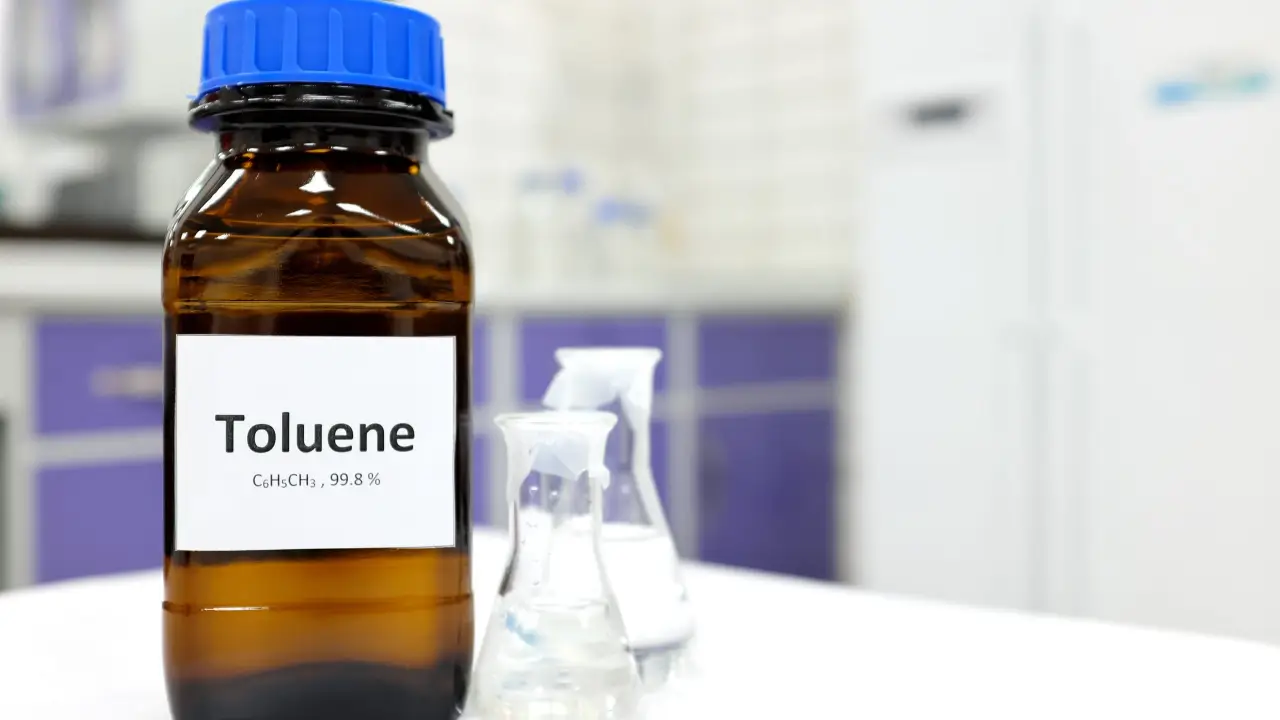Supplier of Toluene from Turkey and Dubai-UAE

What is Toluene?
Toluene, also known as methylbenzene, is a clear, colorless liquid with a sweet, aromatic odor. It is an aromatic hydrocarbon containing a benzene ring bonded to a methyl group (C₆H₅CH₃). Due to its excellent solvent power and versatility, toluene is widely used across industrial and chemical manufacturing sectors.
This compound serves as both a solvent and an intermediate feedstock for various chemicals, making it an essential raw material in coatings, adhesives, pharmaceuticals, and fuel formulations.
Physical and Chemical Properties of Toluene
Physical Properties:
-
Appearance: Clear, colorless liquid
-
Odor: Sweet, aromatic (similar to paint thinners)
-
Boiling Point: 111°C (232°F)
-
Melting Point: -95°C (-139°F)
-
Density: 0.87 g/mL
-
Solubility: Insoluble in water, miscible with organic solvents
Chemical Properties:
-
Formula: C₆H₅CH₃ (PhCH₃)
-
Classification: Aromatic hydrocarbon
-
Reactivity: Undergoes electrophilic substitution faster than benzene
-
Flammability: Highly flammable liquid (flash point ≈ 40°F)

Types and Grades of Toluene
Toluene is available in several grades depending on its purity and end use. The most common grades include:
1. TDI Grade
-
Purity: >99.5%
-
Used as a feedstock for producing Toluene Diisocyanate (TDI), a key component in polyurethane foams, coatings, and insulation materials.
2. Nitration Grade
-
Purity: Around 99.0%
-
Primarily used in manufacturing explosives such as TNT (Trinitrotoluene), dyes, and pharmaceutical intermediates, where high purity is essential.
3. Commercial Grade
-
Purity: 90%–95%
-
A cost-effective solvent used in paints, adhesives, leather processing, and cleaning agents.
-
Also serves as a fuel additive in some regions to improve octane ratings and engine efficiency.

Applications and Uses of Toluene
Toluene’s versatility makes it vital across numerous industries. Below are the key applications:
1. Industrial Applications
-
Chemical Feedstock: Toluene is used to produce benzene, TDI, and nylon intermediates.
-
Solvent: Ideal for dissolving paints, coatings, rubber, plastics, and adhesives.
-
Printing Industry: Ensures smooth ink application and consistency.
-
Leather and Textile Processing: Used as a cleaning and softening agent.
2. Energy and Fuel Applications
-
Fuel Additive: Enhances octane rating and combustion efficiency in gasoline.
-
High-Performance Fuels: Used in aviation and motorsport fuel formulations.
3. Consumer and Household Uses
-
Adhesives & Paints: Acts as a thinner and solvent.
-
Nail Care Products: Historically used in nail polish removers (though now replaced by safer alternatives).
4. Scientific and Specialty Applications
-
Laboratory Solvent: Used in chromatography and analytical testing.
-
Thermometers: Low freezing point makes it suitable for use in minimum-reading thermometers.
For comparison, Caustic Soda Flakes are another essential industrial chemical often used alongside toluene in cleaning and pH control processes.
Safety and Handling of Toluene
Toluene is flammable and poses health risks if mishandled. Follow these precautions:
-
Work in well-ventilated areas or under exhaust systems.
-
Wear protective gloves, goggles, and chemical-resistant clothing.
-
Avoid skin contact; wash immediately with soap and water if exposed.
-
Store in cool, dry, and ventilated areas, away from heat and ignition sources.
-
Do not eat, drink, or smoke near the chemical.
-
Always refer to the Safety Data Sheet (SDS) for your specific toluene grade.
Packing and Transportation of Toluene
Toluene is packed and shipped under strict international transport guidelines to ensure product quality and safety.
1. Packaging Options
-
Drums: 200-liter (55-gallon) steel drums for standard quantities.
-
IBC Tanks: 1,000-liter (264-gallon) HDPE containers with metal cages.
-
ISO Tanks: For large-scale or long-distance exports.
2. Container Loading Information
-
In 20ft Container: Approximately 80 drums (16,000 liters)
-
In 40ft Container: Approximately 160 drums (32,000 liters)
-
Ensure containers are stored upright and properly sealed to prevent leaks.
Conclusion
Toluene remains an essential industrial solvent and feedstock with broad applications in chemical production, coatings, fuel additives, and cleaning solutions. Its balance of performance, availability, and cost-effectiveness makes it a vital raw material in both industrial and commercial sectors.
For bulk supply and export of toluene, contact a trusted industrial chemical supplier offering reliable shipping and competitive pricing.

